Plant of the Month: April 2022

Sanguinaria canadensis f. multiplex ‘Plena’
Sanguinaria canadensis, the common Bloodroot, carpets our woodland floors in early spring as the buds overhead start to swell. Their beauty is fleeting - true spring ephemerals. Petals soon drop after pollination, which occurs in a few days.
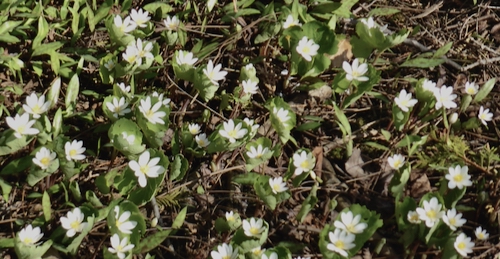
Sanguinaria canadensis in wild
However, a double, longer lasting form with multi-petals was found in 1916 in Dayton, Ohio. This is sterile, with only petals, so there is no fertilization to trigger petal drop. It was thought to be lost, but had been propagated in Montreal Botanical Garden. Today, Sanguinaria canadensis f. multiplex ‘Plena’ is available in many specialized nurseries and society plant sales. It is a handsome addition to the spring garden. All plants we grow are clones of the original plant.
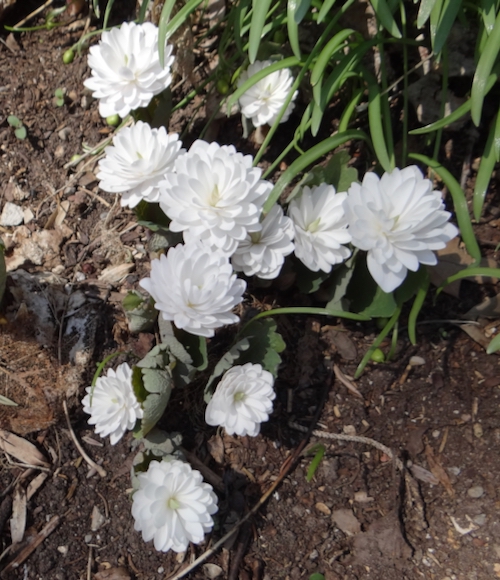
Sanguinaria canadensis f. multiplex ‘Plena’
It is a member of the Papaveraceae (the poppy family) and contains a coloured, alkaloid rich, toxic latex like many of this family. Here, the latex is red (sanguine). The First Nations used this for traditional medicine, to colour baskets, clothing, war paint and as an insect repellant.
GENERAL INFORMATION:
Synonyms: Sanguinaria canadensis var. rotundifolia, Sanguinaria canadensis ‘Multiplex’
Common Name: Bloodroot, Puccoon
Life Cycle: Perennial rhizome
Height: 20 cm
Bloom Time: April - May
Flower Colour & Size: Pure white, solitary, 7 cm wide. Sometimes bluish in bud.
Leaves: Simple, bluish grey green, round, with scalloped edges. One leaf clasps each flower stalk till it opens. Leaves become dormant in mid-late summer.
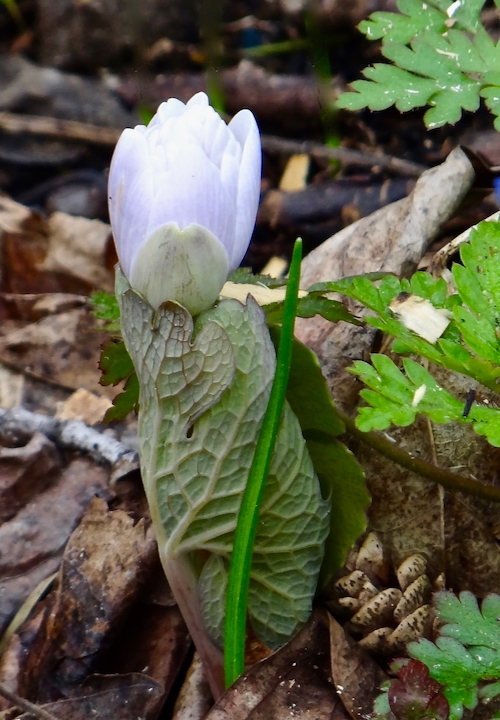
Emerging flower protected by leaf
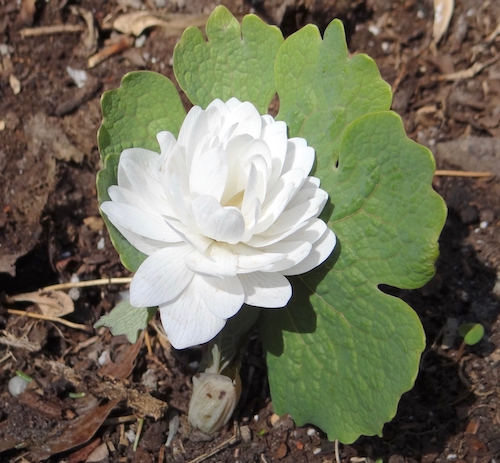
Open flower
Range: From Quebec to Manitoba, south to Florida and Texas.
Habitat: Rich, deciduous woodland.
CULTIVATION:
Plant rhizomes just below the soil surface. Toxic - use gloves. It will slowly form attractive clumps. Mulch with deciduous leaves in the fall.
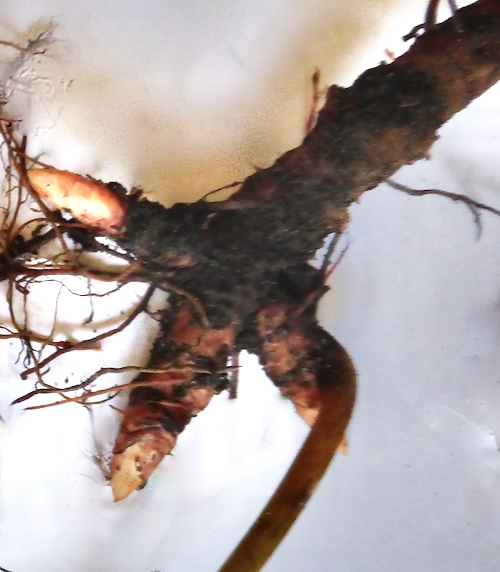
Sanguinaria rhizome
Light: Shade, part shade.
Soil: Humus rich. pH 7, around neutral.
Water: Moist, well drained.
USDA Hardiness: Zone 3 - 8b.
Companion Plants: Native woodlanders, other spring bulbs, small ferns, Hosta, clumping Epimedium.
Propagation: Division of rhizomes when leaves die down
Seedex availability: No seed - flowers sterile
Problems: Unexplained death. Many clumps suddenly died in many gardens a few years ago. Luckily I had one clump left. Could it be clonal age? - all the same age! My present clumps seem healthy. Divide every three or four years.
Toxicity: Plants for a Future (pfaf.org) states that the plant, especially the roots are toxic, and contain a number of opium-like alkaloids. It is anaesthetic, cathartic, emetic, expectorant, diuretic, febrifuge, sedative, stimulant. It is taken internally in the treatment of bronchial, respiratory tract and throat infections, and poor peripheral circulation. It is used in traditional medicine but needs medical supervision. The extract, sanguinarine, was used in toothpaste and mouthwash about 20 years ago but has been withdrawn.
References: Encyclopedia of Alpines; AGS Publications 1994
Plants for a Future (pfaf.org)
(Text and images contributed by Anna Leggatt)
